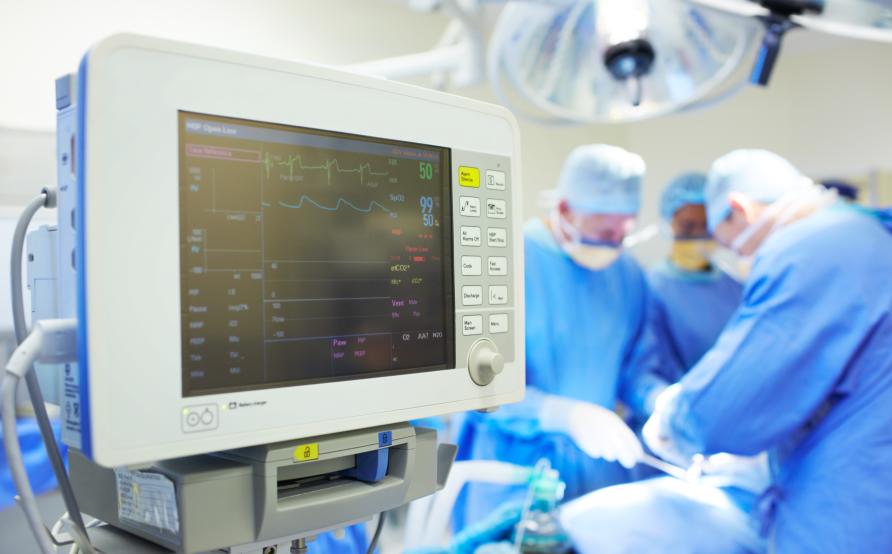Researchers have developed a world-first blood test which improves the prediction of the long-term risk of heart attack in people with severe coronary artery disease.
A simple blood test could identify patients most at risk of suffering a life-threatening cardiac event, after researchers found that high levels of a key enzyme more than doubled the chances of heart attack, heart failure and death over ten years among patients with coronary artery disease.

The research means clinicians have a new potential biomarker for identifying those patients who are at high risk and may need their medications increased or other interventions to ward off a future heart attack or heart failure.
Coronary artery disease, in which the arteries carrying oxygen-rich blood away from the heart become clogged with fatty plaque, is the leading cause of death among Australians.
The enzyme ACE2 has been associated with cardiovascular disease for a decade, but researchers at Austin Health and the University of Melbourne have recently found that the higher the level of circulating ACE2, the greater the risk.
The scientists followed 79 patients (men and women) with coronary artery disease over ten years, and found 46 per cent of them experienced heart attacks, heart failure or death in that time. But in those with the highest levels of ACE2, the risk was increased 2.5–fold compared to those with lower levels of ACE2.
“While our study was small, we saw the risk of heart attack, heart failure or death was significantly increased in those with higher levels of ACE2,” says study lead author Professor Louise Burrell.
“Our study included only people with severe coronary artery disease diagnosed by a coronary angiogram.”
“We found that ACE2 was elevated in all patients with coronary artery disease compared to healthy subjects. Patients with coronary artery disease are already known to be at increased risk, and it was only when we followed the patients for three to four years that the adverse impact of having very high ACE2 levels on top of coronary artery disease were seen”, says Professor Burrell.
“Seeing such a difference after a few years is very significant. If that was a result from a trial of a new drug, we’d be looking at a new treatment for coronary disease.”
“The next step is to see if this result can be replicated with a bigger cohort.”
Professor Burrell was part of the team that first discovered a method to measure ACE2 in human blood. The enzyme plays a role in breaking down a peptide called angiotensin II, which causes inflammation and constriction in the blood vessels, contributing to the development of cardiovascular disease.
Heart disease and high blood pressure are associated with the angiotensin system being activated, but it is only in the last ten years that researchers have understood how the body attempts to balance this using ACE2.
Healthy people have undetectable to very low levels of ACE2 circulating in their bloodstream. But the enzyme’s levels start to go up with the onset of cardiovascular risk factors like hypertension and high lipids (fats and oils) – further increases have been seen in heart failure and abnormal heart rhythms.
“When people develop heart disease, we see balance between angiotensin and ACE2 go out of whack, and rather than remaining in the heart tissue and blood vessels where it’s needed, ACE2 sheds into the bloodstream. That’s when we can detect high levels,” explains Professor Burrell.
Understanding the processes underpinning this is still an area of active research, but it is emerging as an increasingly promising avenue for researchers looking to understand who is at the greatest risk of dying from coronary artery disease.
Coronary artery disease is well understood and its prognosis is improving all the time. Management strategies include lifestyles changes like quitting smoking, a healthier diet and exercise, medications with proven cardio-protective benefits (like aspirin, statin, beta-blockers and angiotensin enzyme inhibitors/angiotensin receptor blockers), and surgical interventions (like coronary artery bypass and stents).
But some people with coronary artery disease remain at higher risk of heart attack or death than others, and we need new approaches to identify these patients.

Professor Burrell and her team have now recruited nearly 400 patients with coronary artery disease from Austin Health in Melbourne for the next step in the research, which will seek to confirm their findings in a larger cohort. They also plan to investigate the genetics underpinning ACE2.
“We shall look at both genetic material and blood in this next cohort to try to understand what outcomes having a particular ACE2 genotype will lead to,” says Professor Burrell.
Ultimately, confirming their findings will mean the researchers can update clinical guidelines for doctors treating patients with coronary artery disease. And, ideally, they will be able to add high ACE2 levels to the range of risk factors and biomarkers already considered.
“Being able to add a blood test for ACE2 levels to the risk assessment for people with coronary artery disease can only serve to make sure the right people get the right treatments for this disease – which remains such a big killer.”
“This article was first published on Pursuit. Read the original article.”





















Add Comment